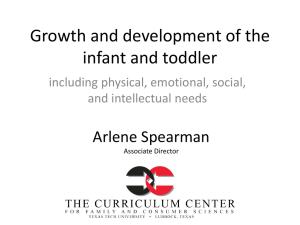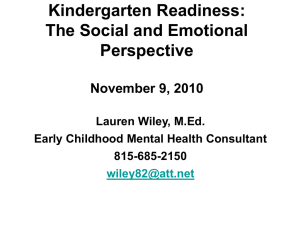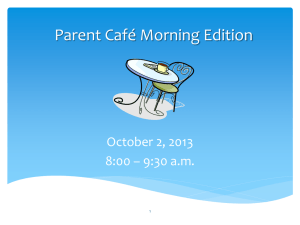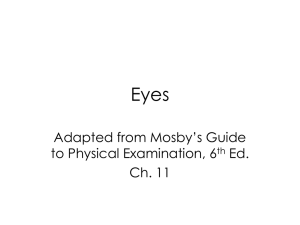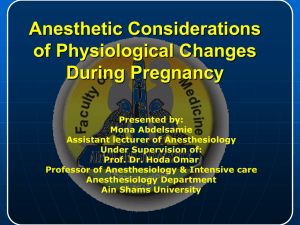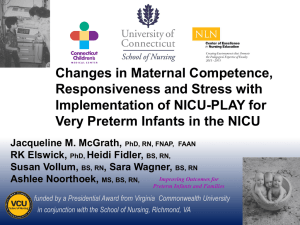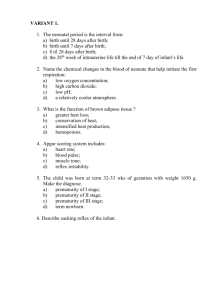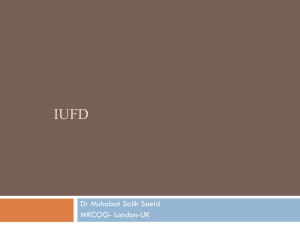Mon 19 January 15 -The Begining of Life
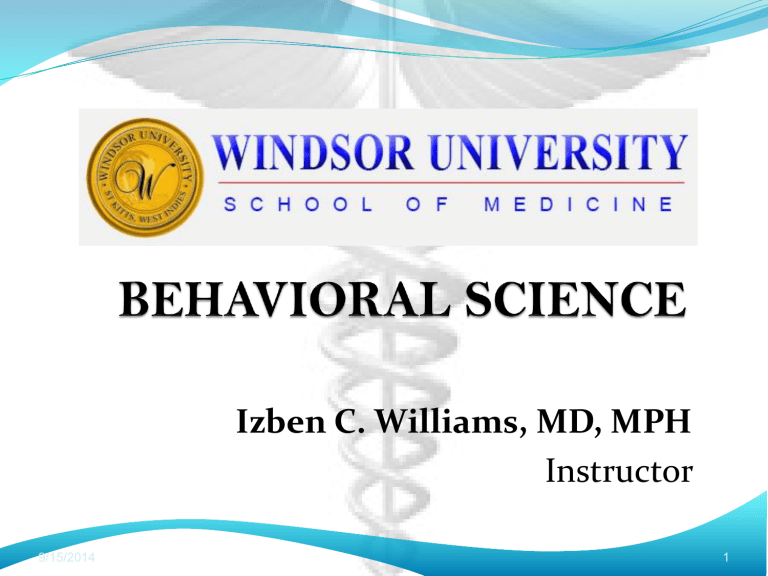
9/15/2014
Izben C. Williams, MD, MPH
Instructor
1
Developmental Journey
There are immensely complicated, mysterious, and beautiful transformation (biological, psychological and social) that take place between conception and old age
The period from CONCEPTION TO BIRTH sets the stage for all other development that we undergo as humans
9/15/2014 2
Some Prenatal Influences I
Genetic factors play a prominent role in determining the biological potential of a fetus.
The process of development is a sequential unfolding of normal events (and disorders) that are genetically determined
In about 40% of children with ADD heriditary factors are the basis
Down syndrome (trisomy 21), Klinefelter syndrome
(XXY) and Fragile X syndrome are also genetically determined conditions
9/15/2014 3
Some Prenatal Influences
II
Sex and survival factors:
At conception 160 M : 100 F
At birth the ratio is aprox. 100 M : 100 F.
The surviving males have a higher risk for some degree of brain dysfunction
ADD ten times more frequent in males
Gestational age, birth-weight, maternal health, and perinatal factors may predict outcome
9/15/2014 4
Intrauterine Influences on development I
The intrauterine environment can significantly affect fetal brain development, and hence all future actions (behaviors)
Animal models used to mimic adverse intra uterine conditions in humans
Intrauterine insults to the brain may be acute or chronic
9/15/2014chronic 5
Intrauterine Influences II
Even brief periods of hypoxemic compromise can have significant effects on the fetal brain causing neuronal loss and cerebral white matter damage
Subtle brain injury can occur, for example to a particular class of neuron, and this can have a significant effect on the function of a specific system,
(eg hearing, vision)
9/15/2014 6
Intrauterine Influences III
Chronic mild placental insufficiency can result in long term deficits in neuronal connectivity
Repeated acute exposure to an inflammatory agent results in diffuse subcortical white matter damage and in some cases periventricular necrosis.
The timing and severity of these prenatal insults determines outcomes, in terms of the severity of the damage and the regions of the brain affected.
9/15/2014 7
Smoking and Alcohol
Placenta mediates fetal growth and influences long-term health
Placenta to birth-weight ratio is regarded as an indicator of the quality of placental function
Maternal prenatal smoking and alcohol consumption may influence fetal growth by either directly or indirectly altering the function of the placenta, and hence the development of the fetus.
9/15/2014 8
Role of the placenta in fetomaternal exchanges
Reminder of placental role:
Exchange process via membranous exchange mechanisms
The fetal lung
Nutritive and excretory functions
Protective function and Immunological barrier
Endocrine function and protein transfer
9/15/2014 9
Some noxious trans placental influences
Some microbes can cross the placental barrier despite its efficiency:
Sexually transmitted diseases (treponema palidum, HIV, Neisseria Gonorrhea
Feto-toxic infections (rubella, toxoplasmosis, cytomegalovirus, herpes simplex genitalis)
Drugs (most antibiotics, corticosteroids, teratogenic drugs such as Roacutane and
Thalidomide
9/15/2014 10
Neonatal Capacities
At birth, the infant is pre-adapted to be cared for by the mother by the presence of attachment
behaviors.
Initial attachment behaviors (eg. crying and clinging) increase the likelihood of maternal care and assist the infant in attaching to the mother
9/15/2014 11
Neonatal Capacities
The neonate possesses a number of innate simple reflexes
1.
2.
Moro reflex or startle reflex: flexion of extremities in response to sudden stimulation
Palmar grasp reflex
3.
4.
The rooting and sucking reflexes (both aid in feeding the infant
The Babinski reflex
9/15/2014 12
Development Sequences
Key : Consult table in text for schedule of motor,
vocal, and sensory development sequences of the infant
Cognitive maturation: by age 18 to 24 months a child is capable of elementary trial-and-error reasoning.
For example a child will attempt to place a square object into a square opening of a form box after trying to insert it into the circular and triangular opening
9/15/2014 13
Birth and Post-partum
Two separate patients: Mother and Infant
Infant status
APGAR
Primitive reflexes (Startle, sucking, grasp, Babinski)
Maternal status
Physical status
Psychological status
9/15/2014 14
Theories of Development
Several theories, derived primarily from clinical experience and experiment.
Perhaps the best known systems in use today, are:
Freud’s psychoanalytic theory,
Piaget’s Cognitive developmental stages
Ericson’s Psychosexual stages
The theories mostly identify developmental landmarks
9/15/2014 15
Concepts of Child
Development
There is a lawfulness to all natural development, which serves as a framework within which we can assess and understand children and adults
Epigenesis: The development of an embryo from the successive differentiation of an originally undifferentiated structure (Epigenetic= after genes)
Physical Epigenesis
Behavioral Epigenesis
9/15/2014 16
9/15/2014
Developmental Tasks
17
Multiple developmental tasks
The pre-school child traverses several motor, social, and verbal/cognitive developmental zones by age six.
Key : See schedule of age-related developmental tasks, in text. Important to have an appreciation of these milestones
9/15/2014 18
Developmental Screening
There are many Developmental Screening-and-
Assessment (S&A) Instruments for young children ages birth through five years
Link to S&A instruments: http://www.nectac.org/~pdfs/pubs/screening.pdf
These instruments emphasize Psychological,
Social, Emotional and Physical Development
9/15/2014 19
Psycho-Social
Development I
The principle psychological task of the first year of life is the formation of intimate differentiated
attachment to mother of caregiver.
Failure of the infant to develop this specific early attachment may result in later defects in the capacity for empathy and for close warm reciprocal relationship.
9/15/2014 20
Psycho-Social Dev’nt II
The social smile is an early marker of the beginning development of a specific differentiated relationship, as are the preferential vocalization, visual pursuit and anticipatory gesturing of the 5-month-old infant in the presence of the mother
Endogenous smiling develops from an innate reflex response at birth
Exogenous smiling a response to the form of a face – 8 weeks
Preferred social smile a response to mother’s face 16 weeks
9/15/2014 21
Psycho-Social Dev’nt III
Stranger anxiety begins at ~ 8 months
Object relations (psychoanalytic theory)
Response to Maternal deprivation/separation
Play: its role and significance
Autonomy and self awareness
9/15/2014 22
Psycho-Social Dev’nt IV
Sociocultural factors:
Innercity: increases risk of psyc. disorders
ADD: twice as high in low income families
Psychosocial, or sociocultural, retardation: deficient language, speech and cognitive skills associated with relative deficiency in adequate early stimulation (usually lower socio economic class)
Weaning from bottle shorter in middle class
toilet training favors lower class
9/15/2014 23

